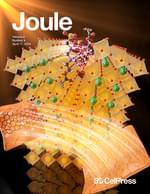Macromolecules
Kam C. Poon, Madeleine L. Smith, and Charlotte K. Williams Macromolecules Article ASAP DOI: 10.1021/acs.macromol.4c00455
View Journal Article / Working PaperUsing CO2 polycarbonates as engineering thermoplastics has been limited by their mechanical performances, particularly their brittleness. Poly(cyclohexene carbonate) (PCHC) has a high tensile strength (40 MPa) but is very brittle (elongation at break <3%), which limits both its processing and applications. Here, well-defined, high molar mass CO2 terpolymers are prepared from cyclohexene oxide (CHO), cyclopentene oxide (CPO), and CO2 by using a Zn(II)Mg(II) catalyst. In the catalysis, CHO and CPO show reactivity ratios of 1.53 and 0.08 with CO2, respectively; as such, the terpolymers have gradient structures. The poly(cyclohexene carbonate)-grad-poly(cyclopentene carbonate) (PCHC-grad-PCPC) have high molar masses (86 < Mn < 164 kg mol–1, ĐM < 1.22) and good thermal stability (Td > 250 °C). All the polymers are amorphous with a single, high glass transition temperature (96 < Tg < 108 °C). The polymer entanglement molar masses, determined using dynamic mechanical analyses, range from 4 < Me < 23 kg mol–1 depending on the polymer composition (PCHC:PCPC). These polymers show superior mechanical performance to PCHC; specifically the lead material (PCHC0.28-grad-PCPC0.72) shows 25% greater tensile strength and 160% higher tensile toughness. These new plastics are recycled, using cycles of reprocessing by compression molding (150 °C, 1.2 ton m–2, 60 min), four times without any loss in mechanical properties. They are also efficiently chemically recycled to selectively yield the two epoxide monomers, CHO and CPO, as well as carbon dioxide, with high activity (TOF = 270–1653 h–1, 140 °C, 120 min). The isolated recycled monomers are repolymerized to form thermoplastic showing the same material properties. The findings highlight the benefits of the terpolymer strategy to deliver thermoplastics combining the beneficial low entanglement molar mass, high glass transition temperatures, and tensile strengths; PCHC properties are significantly improved by incorporating small quantities (23 mol %) of cyclopentene carbonate linkages. The general strategy of designing terpolymers to include chain segments of low entanglement molar mass may help to toughen other brittle and renewably sourced plastics.





